Finite Element Preconditioning on Spectral Element Discretizations for Coupled Elliptic Equations
Abstract
The uniform bounds on eigenvalues of are shown both analytically and numerically by the 𝒫1 finite element preconditioner for the Legendre spectral element system which is arisen from a coupled elliptic system occurred by an optimal control problem. The finite element preconditioner is corresponding to a leading part of the coupled elliptic system.
1. Introduction
Optimal control problems constrained by partial differential equations can be reduced to a system of coupled partial differential equations by Lagrange multiplier method ([1]). In particular, the needs for accurate and efficient numerical methods for these problems have been important subjects. Many works are reported for solving coupled partial differential equations by finite element/difference methods; or finite element least-squares methods ([2–5], etc.). But, there are a few literature (for examples, [6, 7]) on coupled partial differential equations using the spectral element methods (SEM) despite of its popularity and accuracy (see, e.g., [8]).
One of the goals in this paper is to investigate a finite element preconditioner for the SEM discretizations. The induced nonsymmetric linear systems by the SEM discretizations from such coupled elliptic partial differential equations have the condition numbers which are getting larger incredibly not only as the number of elements and degrees of polynomials increases but also as the penalty parameter δ decreases (see [5] and Section 4). Hence, an efficient preconditioner is necessary to improve the convergence of a numerical method whose number of iterations depends on the distributions of eigenvalues (see [9–12]). Particularly, the lower-order finite element/difference preconditioning methods for spectral collocation/element methods have been reported ([9, 10, 13–17], etc.).
The field of values arguments will be used instead of analyzing eigenvalues directly because the matrix representation of the target operator, even with zero convection term, is not symmetric. We will show that the real parts of eigenvalues are positive, uniformly bounded away from zero, and the absolute values of eigenvalues are uniformly bounded whose bounds are only dependent on the penalty parameter δ in (1.1) and the constant vector b in (1.1). Because of this result, one may apply a lower-order finite element preconditioner to a real optimal control problem subject to Stokes equations which requires an elliptic type solver.
This paper is organized as follows: in Section 2, we introduce some preliminaries and notations. The norm equivalences of interpolation operators are reviewed to show the norm equivalence of an interpolation operator using vector basis. The preconditioning results are presented theoretically and numerically in Section 3 and Section 4, respectively. Finally, we add the concluding remarks in Section 5.
2. Preliminaries
2.1. Coupled Elliptic System
We use the standard Sobolev spaces like H1(Ω) and on a given domain Ω with the usual Sobolev seminorm |·|1 and norm ∥·∥1. The main content of this paper is to provide an efficient low-order preconditioner for the system (1.1).
2.2. LGL Nodes, Weights, and Function Spaces
2.3. Interpolation Operators
Theorem 2.1. For all , there are positive constants c0 and c1 independent of E and N such that
Proof. By the definitions of the interpolation operator and the norms, we have
3. Analysis on 𝒫1 Finite Element Preconditioner
Proposition 3.1. For a real valued vector function , we have
Proof. Since b is a constant vector, , and is a real valued vector function, we have
Lemma 3.2. If is a complex valued function in , then we have the following estimates:
Proof. Let us decompose u and v in as u(x, y) = p(x, y) + iq(x, y) and v(x, y) = r(x, y) + is(x, y), where p, q, r, and s are real functions and i2 = −1. Then we have
Let and be the spectrum (or set of eigenvalues) and field of values of the square matrix , respectively. Let and be the two dimensional stiffness matrices on the spaces and induced by (3.1) and (3.2), respectively. Then, we have the following.
Lemma 3.3. For , one has
Proof. Since is symmetric positive definite, there exists a unique positive definite square root of . So, we have
Theorem 3.4. Let be the set of eigenvalues of
Proof. Let be represented as . Then, its piecewise polynomial interpolation can be written as
Remark 3.5. Let the one dimensional (1D) bilinear forms for be
4. Numerical Tests of Preconditioning
4.1. Matrix Representation
4.2. Numerical Analysis on Eigenvalues
The linear system and the preconditioned linear system will be compared in the sense of the distribution of eigenvalues. As proved in Section 3, it is shown that the behaviors of spectra of are independent of the number of elements and degrees of polynomials.
One may also see the condition numbers of these discretized systems by varying the penalty parameter δ. The condition numbers of are presented in Figure 1 for fixed δ = 1 (left) and fixed E = 3 (right) as increasing the degrees N of polynomials. It shows that such condition numbers depend on N, E, and δ. In particular, the smaller δ is, the larger condition number it yields.
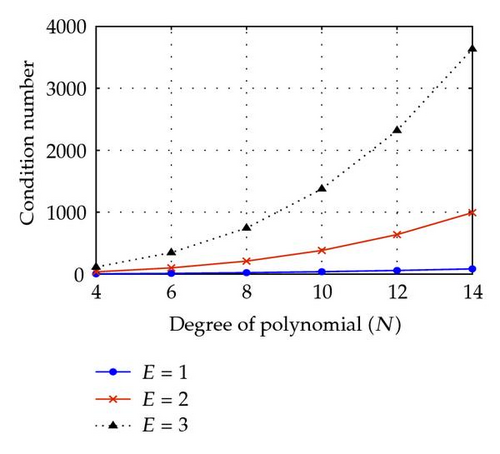
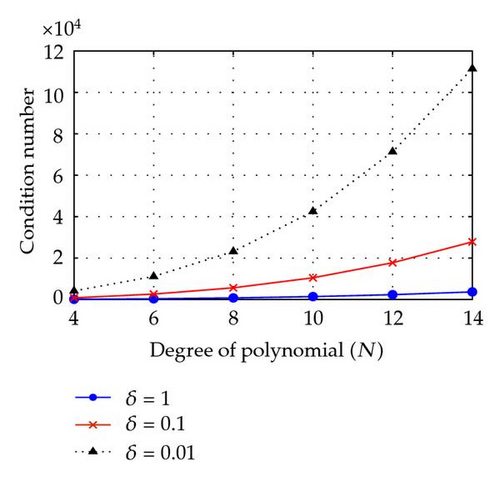
Figures 2 and 4 show the spectra of the resulting preconditioned operator for the polynomials of degrees N = 4,6, 8,10 and E = 4 when δ = 1 and δ = 10−4, respectively. Also, Figures 3 and 5 show the spectra of for E = 4,6, 8,10 and N = 4 for δ = 1 and δ = 10−4, respectively. The same axis scales are presented for the same δ when b = [1,1]T. As proven in Theorem 3.4, the eigenvalues of are independent of N and E, but they depend still on the penalty parameter δ.
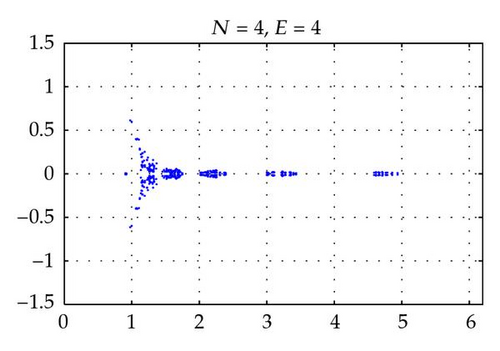
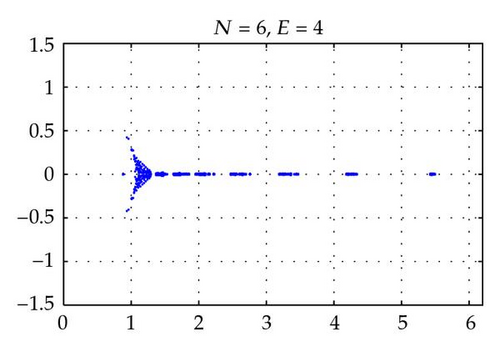
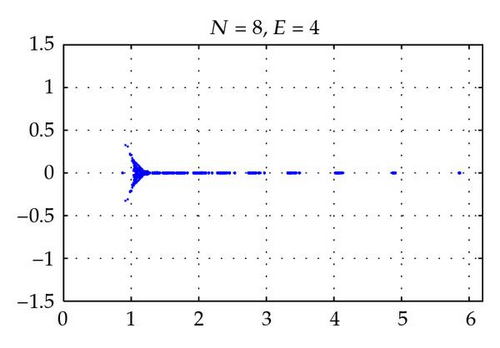
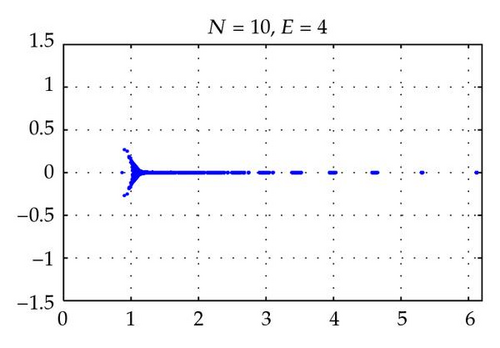
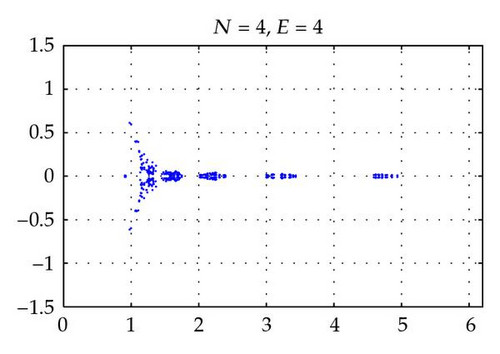
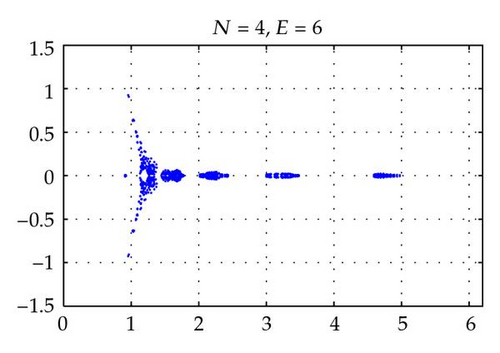
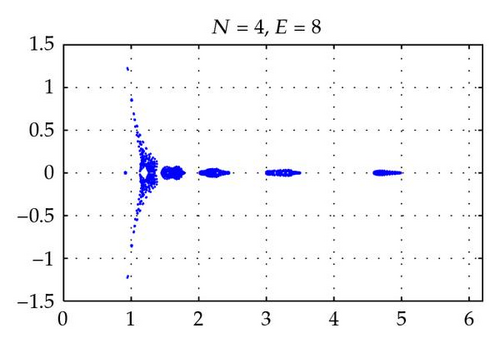
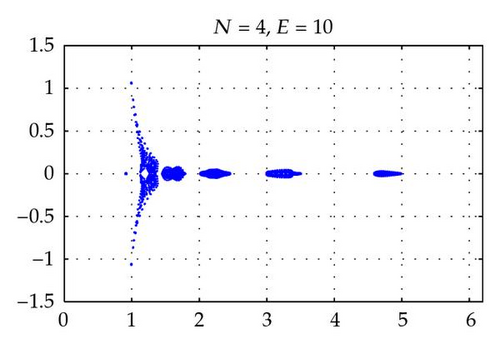
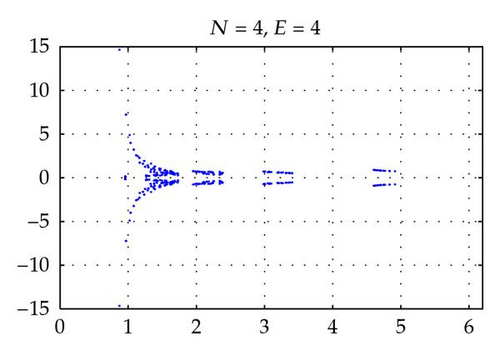
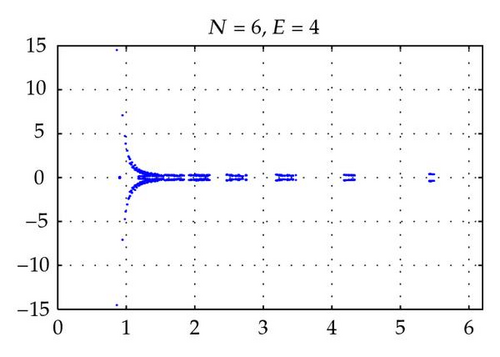
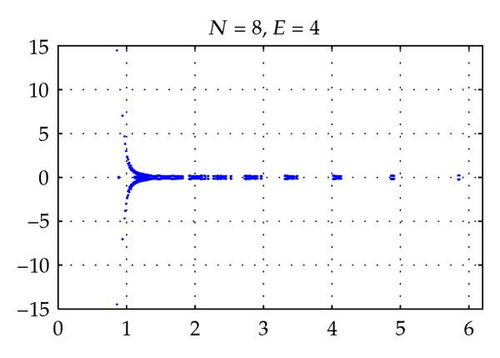
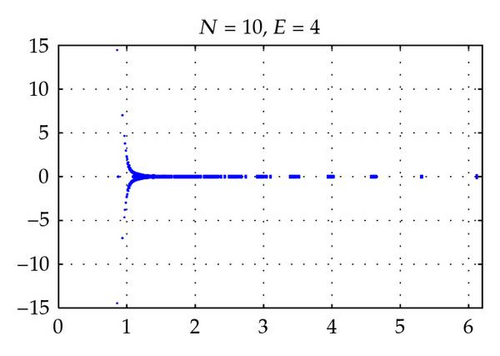
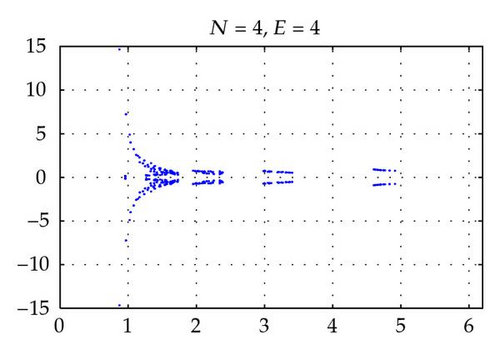
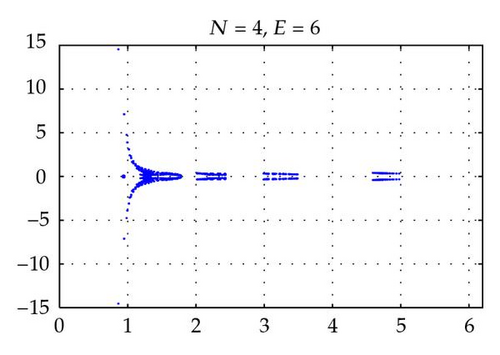
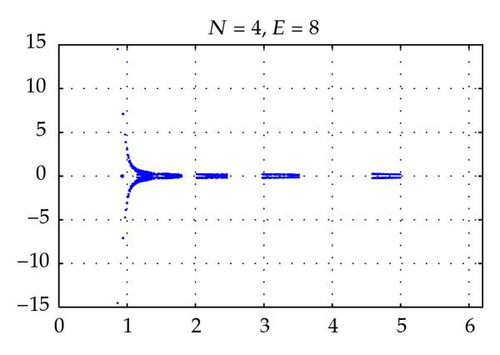
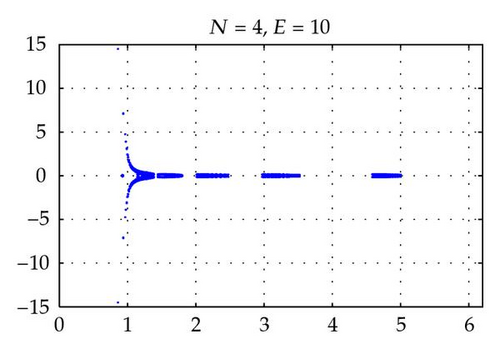
By choosing the convection coefficient b = [10,10]T, in Figure 6, the distributions of eigenvalues of (left) and (right) are presented for penalty parameters δ = 1,10−3 to examine their dependence. In this figure, we see that the distributions of eigenvalues (both real and imaginary part) of are strongly dependent on δ. The real parts of such eigenvalues are increased in proportion to 1/δ. On the other hand, as predicted by Theorem 3.4, the real parts of the eigenvalues of are positive and uniformly bounded away from 0. Moreover, the real parts are not dependent on δ and b (see Figures 2–6), and their moduli are uniformly bounded. The numerical results show that the imaginary parts of the eigenvalues are bounded by some constants which are dependent on δ and b. These phenomena support the theory proved in Theorem 3.4.
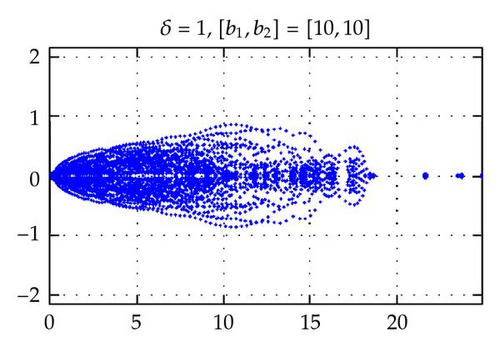
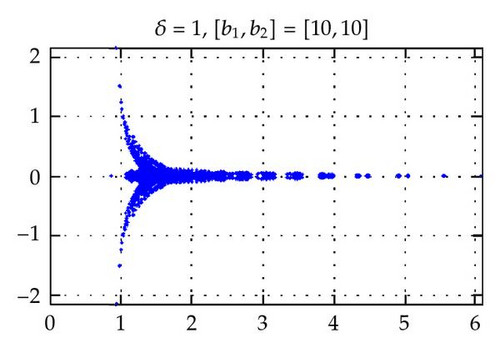
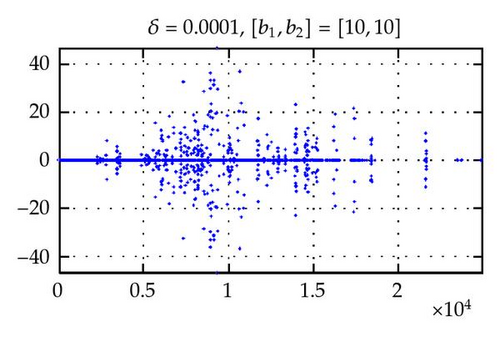
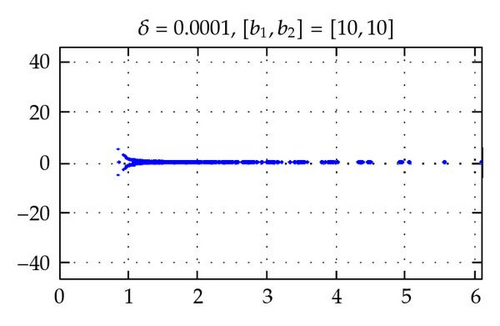
5. Concluding Remarks
An optimal control problem subject to an elliptic partial differential equation yields coupled elliptic differential equations (1.1). Any kind of discretizations leads to a nonsymmetric linear system which may require Krylov subspace methods to solve the system. In this paper, the spectral element discretization is chosen because it is very accurate and popular, but the resulting linear systems have large condition numbers. This situation now becomes one of disadvantages if one aims at a fast and efficient numerical simulation for an optimal control problem subject to even a simple elliptic differential equation. To overcome such a disadvantage, the lower-order finite element preconditioner is proposed so that the preconditioned linear system has uniformly bounded condition numbers independent of the degrees of polynomials and the mesh sizes. One may also take various degrees of polynomials on subintervals with different mesh sizes. In this case, similar results can be obtained without any difficulties. This kind of finite element preconditioner may be used for an optimal control problem subject to Stokes flow (see, e.g., [13]).
Acknowledgments
The authors would like to thank Professor. Gunzburg for his kind advice to improve this paper. This work was supported by KRF under contract no. C00094.




